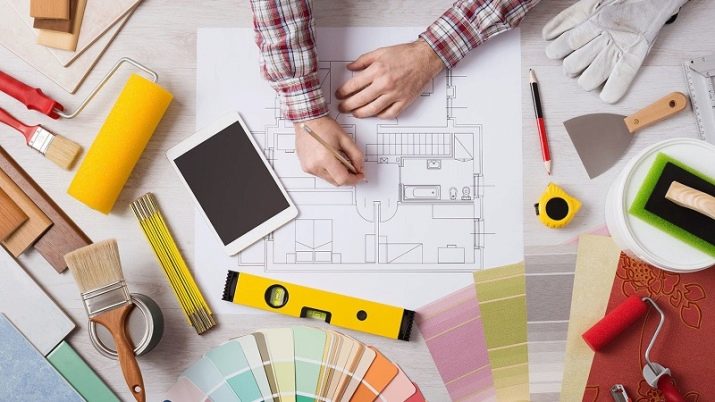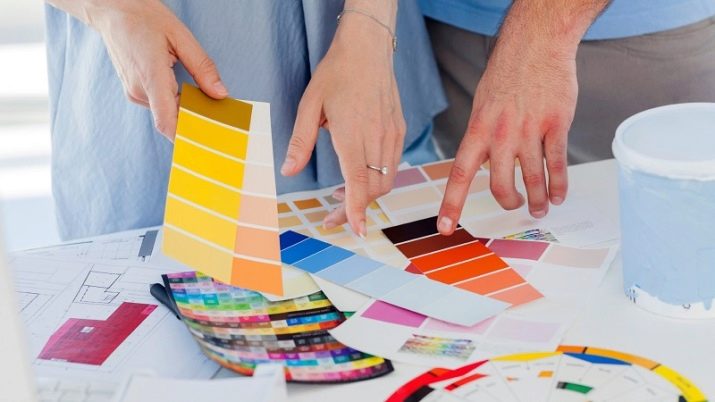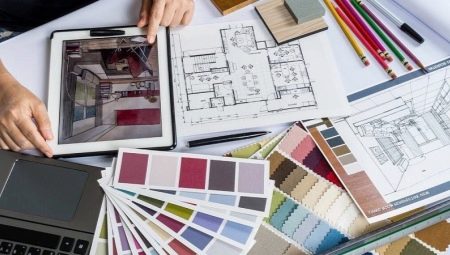The profession of designer today is one of the most popular. This is due to demand in the market, and quite serious prospects, and good income. In addition, this type of work allows you to be creatively implemented. However, becoming a good designer is not easy. To achieve heights in the profession, special education, impeccable taste, a sense of color, creative thinking and perseverance will be required.
There are a lot of institutions that train designers, from higher education institutions to regular courses.

What does an interior designer do?
The interior design specialist solves issues related to arranging a comfortable and aesthetic room. It can be an apartment, a house or a separate room - a bedroom, a living room, a kitchen. The designer not only makes the project and description for it, but also exercises control until the repair is completed.
There are 3 principles that underlie the arrangement of the premises:
- aesthetics - any interior should be beautiful and delight the customer;
- functionality - this characteristic provides comfort, ease of use of the room;
- uniformity - without a holistic composition, a truly harmonious ensemble is unlikely to succeed.
It is these principles that guide every specialist in the design of an apartment or house.
There is also a classification of designers:
- residential design specialist - private houses, apartments;
- non-residential design specialist - Offices, theaters, banks, philharmonic societies, restaurants, hotels and other public places.
Most designers, although they have extensive knowledge, specialize in 1-2 areas. Also, a designer can combine his duties with those of an architect and engage in non-global changes in architecture.

A professional designer is judged by the following criteria:
- reliability and quality of selected materials;
- customer satisfaction;
- aesthetic taste.
Therefore, you should not think that the profession is limited to creativity, it is very important to be able to find an approach to people, competently build communication.
The work process itself consists of the following steps:
- ordering and searching for ideas;
- formation of a concept, case study;
- designing, optimization, harmonization;
- sketching, coordination;
- creation of a 3D model;
- elaboration of drawings;
- project implementation, adjustment by the customer;
- design and arrangement of furniture;
- decoration.

Pros and cons of the profession
The relevance and relevance of the profession is beyond doubt, it is interesting to many, but before deciding to study, it is necessary to weigh the pros and cons.
Advantages of the profession:
- the creative focus of the work allows people with a creative type of thinking to be realized;
- new projects do not let you get bored, unlike routine work;
- opportunities for continuous development, growth;
- prospects in terms of wages and careers;
- high salary;
- there is an opportunity to work for yourself.
There are a number of significant drawbacks:
- At first, you will have to work for a reputation, not for enrichment;
- it is necessary to constantly contact people, take into account their wishes, and seek a compromise in design solutions.

Requirements
To be truly a highly qualified and sought-after specialist, you need not only to choose the right educational institution, but also to have certain skills, traits, and character qualities. You can safely try yourself in the profession, if you are peculiar:
- art plan abilities;
- creative mindset, creativity;
- impeccable aesthetic taste;
- artistic imagination, the ability to create an image by text;
- ability to evaluate the ratio of objects in space;
- color harmony, a sense of symmetry;
- attentiveness, observation, ability to notice details;
- prediction of the result;
- abstract, flexible, associative, intuitive thinking.
In addition, you must have the skills of drawing, designing, computer knowledge. The skill of drawing is desirable, but optional, this can be learned in the preparation process.

Responsibilities
The duties of an interior design specialist include a huge list of works:
- space planning, design;
- accounting for all specialized finishing work and building codes;
- taking into account the properties of materials, furniture, decor;
- control over the performance of all work;
- communication with the customer, starting with his search and ending with the delivery / acceptance of the finished interior.
Simply put, the designer is fully responsible for the comfortable and beautiful decoration of the interior, residential or non-residential, depending on the specialization. Creating an interior environment is subject only to a qualified specialist. It should be equipped safely, physically comfortable and effectively in terms of aesthetics.
Among other tasks of the designer:
- counseling;
- identification of goals, objectives of the project, customer needs;
- creation of layouts, sketches;
- compilation of all documentation;
- organization of space depending on its functionality.
In addition, the designer monitors the market, searches for the necessary interior items, acquires materials.

Education
Learn to become a designer today almost anyone. Admission to a university, institute or other university is the most popular way for graduates. College is a good start for those who go to study after 9th grade. Education in institutions providing higher and secondary education is available to those who have passed the entrance exams.
What items need to be taken
In order to know exactly which exams are provided by a specialized institution, it is necessary to specify individually. For example, somewhere they hand over math or plotting. There are also mandatory items that need to be passed.
- History. Not only the history of culture, but also general knowledge, in which different eras, costumes, life, fashion of these periods are important.
- Literature. This subject is necessary in order to assess the level of literary language skills, because a huge part of the designer's work is communication with people. In addition, the subject develops creative abilities, imagination.
- Specialization, or creative test. This is not only a drawing, but also a painting, a composition. You must be ready to draw a portrait or landscape, create a sketch in different techniques - with chalk, pencil, paints.
A portfolio is desirable - this will make your candidacy preferred. The creative exam is considered the most important, but the requirements for general subjects are quite high, high-quality preparation is required. However, specialization is still profiling, and with equal scores, preference will be given to someone who has recommended himself better in it. Before passing the exam, the following will not be superfluous:
- pass a career guidance test;
- work out in an art school;
- to complete courses at an educational institution.

Where to study?
Modern learning opportunities are diverse, there are several ways leading to the design profession.
- Higher education. Profile training of such a plan is the most fundamental. In the university you can get truly high-quality and extensive knowledge, there is time to study each topic without haste, because training lasts from 4 to 6 years. In addition, if this is the first higher education, then it can be free, subject to passing exams for a high score. Among the minuses are a long training time and a huge number of general subjects that are not always needed.
- Design courses. Lasts from very short periods to 2 years. Training takes place intensively, only the necessary knowledge is given, no water. In most cases, this is a compressed university program. Among the minuses - the probability of getting to not too professional teachers, high cost.
- Practical training. Previously, such people were called "apprentices", now - "designer’s apprentices." In the process of assistance, knowledge is acquired along with experience. There is a lot of practice, there is absolutely no superfluous theory, but this is a difficult path that requires great desire and selfless work.
- Self-training. This is the most difficult way, requiring high self-organization.

average salary
They are no less interested in information about how much a design specialist receives than in the profession itself. This work is extremely in demand, the market is not saturated, so you can not be afraid to remain completely without work. At the same time, the path to high earnings can be difficult and long. Graduates most often get a job in a home repair and home improvement company; at first they earn a little. However, along with gaining experience, practical knowledge, income is growing.
Designer - a profession that provides opportunities for freelance, it is convenient for many people. In this case, the income may be many times higher, but not constant. In any case, you first need to develop a portfolio that will interest future customers. If you work in an organization, you can confidently count on the amount of about 30 thousand rubles. Freelancers with extensive experience, the owners of their interior studios earn many times more - from 100 000 rubles.
Career growth in this area is directly related to professional. You can eventually move from an artist to a leader, open your own studio. In any case, there are a lot of prospects for experienced and talented specialists.
Where to begin?
To become a designer without experience, from scratch, you need to know the answers to the following questions.
- Are you a creative person. Without creativity, there is nothing to do in this profession. The ability to communicate, promote your brand is not as important as innovation, originality, knowledge of the subject, good taste. The customer will almost always go to someone who is ready to offer something unusual, interesting. Creative thinking is essential here.
- Are you an organized person. Creative mess for the designer is not the best companion, especially if in the future you want to engage in freelance work or open your own studio. The ability to carefully develop, think through the details is very important.
- Do the problems scare you. On the way of the designer, they will arise everywhere. Repair is a difficult process that constantly strives to get out of control.











